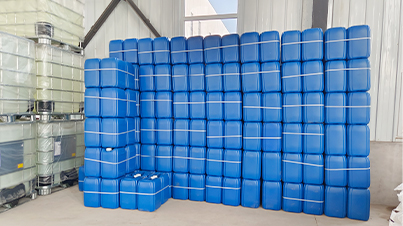different types of flocculants
Different Types of Flocculants An Overview
Flocculants are substances that aid in the agglomeration or clumping together of fine particles suspended in liquids, enabling their removal through sedimentation or filtration. They play a crucial role in various industries including water treatment, food processing, mining, and pharmaceuticals. Understanding the different types of flocculants is essential for selecting the right one for a specific application.
1. Natural Flocculants
Natural flocculants are derived from organic materials and are often biodegradable, making them environmentally friendly. Common natural flocculants include
- Starch and Its Derivatives Modified starch is widely used due to its effectiveness in binding suspended particles. It is commonly employed in the paper industry and wastewater treatment.
- Chitosan Derived from chitin, a substance found in crustacean shells, chitosan is a natural polymer that has demonstrated excellent flocculating properties. It is particularly effective in removing heavy metals and phosphates from wastewater.
- Plant-based Polymers Certain plants, such as Moringa oleifera, produce seeds that contain natural coagulants. Extracts from these seeds are utilized in water purification processes in various regions, especially in developing countries.
2. Synthetic Flocculants
Synthetic flocculants are man-made chemical agents designed to enhance the flocculation process. They are often more effective than natural alternatives. Some common types include
- Polyacrylamides (PAM) These are versatile flocculants widely used in wastewater treatment, mining, and oil recovery. PAM can be anionic, cationic, or non-ionic, allowing for tailored applications depending on the charges of the suspended particles.
- Polyaluminum Chloride (PAC) A widely used inorganic flocculant, PAC is effective in water treatment and can work in a broad pH range, making it suitable for various water composition types.
- Sodium Aluminate Often used in conjunction with PAC, sodium aluminate serves as both a flocculant and a coagulant. Its ability to adjust pH levels aids in the optimal performance of other flocculants.
different types of flocculants

An emerging category in the realm of flocculants is bioflocculants, which are produced by microbial activity. The advantages of bioflocculants include their low toxicity, biodegradability, and effectiveness in various conditions. Some examples include
- Bacterial Bioflocculants Various strains of bacteria produce exopolysaccharides that facilitate flocculation. These bioflocculants can be particularly valuable in treating oily wastewater and in aquaculture.
- Fungal Bioflocculants Certain fungi are known to produce flocculating agents that can remove suspended particles from water. They are regarded as sustainable and non-toxic alternatives, suitable for environmental applications.
4. Cationic, Anionic, and Non-Ionic Flocculants
Flocculants can also be categorized based on their charge, which affects their interaction with suspended particles
- Cationic Flocculants These flocculants carry a positive charge and are typically used to treat negatively charged colloids, such as in the treatment of municipal wastewater.
- Anionic Flocculants With a negative charge, anionic flocculants are useful for binding positively charged particles. They are frequently used in mining and paper industries.
- Non-Ionic Flocculants These do not carry any electrical charge and are effective in a wide range of applications where electrostatic interactions are minimal.
Conclusion
The selection of flocculants is influenced by the specific application and the nature of the suspended particles. Natural flocculants are appreciated for their environmental benefits, synthetic flocculants offer enhanced efficiency, and bioflocculants present a sustainable option for future applications. Understanding the different types of flocculants is crucial for optimizing processes in industries where liquid clarity and particle removal are paramount. As technology advances, the development of more effective and environmentally friendly flocculants remains an area of significant research and application.
-
Dodecyldimethylbenzylammonium Chloride: High-Purity DisinfectantNewsAug.30,2025
-
2-Phosphonobutane-1,2,4-Tricarboxylic Acid: Scale & CorrosionNewsAug.29,2025
-
Premium Isothiazolinones | Broad-Spectrum Biocidal SolutionsNewsAug.28,2025
-
LK-319 Special Scale And Corrosion Inhibitor For Steel Plants: Advanced Solutions for Industrial Water SystemsNewsAug.22,2025
-
Flocculant Water Treatment: Essential Chemical Solutions for Purification ProcessesNewsAug.22,2025
-
Isothiazolinones: Versatile Microbial Control Agents for Industrial and Consumer ApplicationsNewsAug.22,2025





